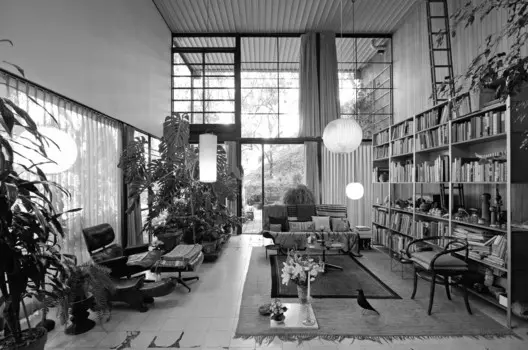
Imagine a world where you can avoid what you don't like - the music that doesn't resonate with you, the theater that bores you, or the art that fails to captivate your interest. However, when it comes to architecture and interior design, it's a different story. A poorly designed space can have a lasting and significant impact on people's lives. And with the increasing amount of time we spend indoors, the importance of well-designed interiors becomes even more evident. In times like the current Covid-19 pandemic, we realize just how crucial interior spaces are for our well-being and the prevention of diseases.
 Eames House / Charles e Ray Eames. Image Courtesy of Archilogic
Eames House / Charles e Ray Eames. Image Courtesy of Archilogic
Interior design is a profession that carries the immense responsibility of creating healthy and aesthetically pleasing environments for people to use and enjoy. It involves planning, researching, coordinating, and managing projects to ensure that the spaces we inhabit contribute positively to our lives. But what exactly is interior design?
Understanding the Essence of Interior Design

Often, people confuse interior design with decoration, but that's a misconception that comes with its fair share of misunderstandings. While the selection of coverings, colors, and finishes is an integral part of interior design, it's far from being its sole focus. At its core, interior design involves understanding user behaviors and desires to create functional and visually appealing spaces.
The organization of movement within a space is one of the starting points in interior design. By manipulating the layout, whether through walls, furniture, or objects, designers can influence the flow and functionality of a space. Additionally, interior design takes into account comfort conditions such as temperature, lighting, and acoustics. Ergonomics also plays a crucial role, ensuring that furniture and objects are designed with the human body in mind.
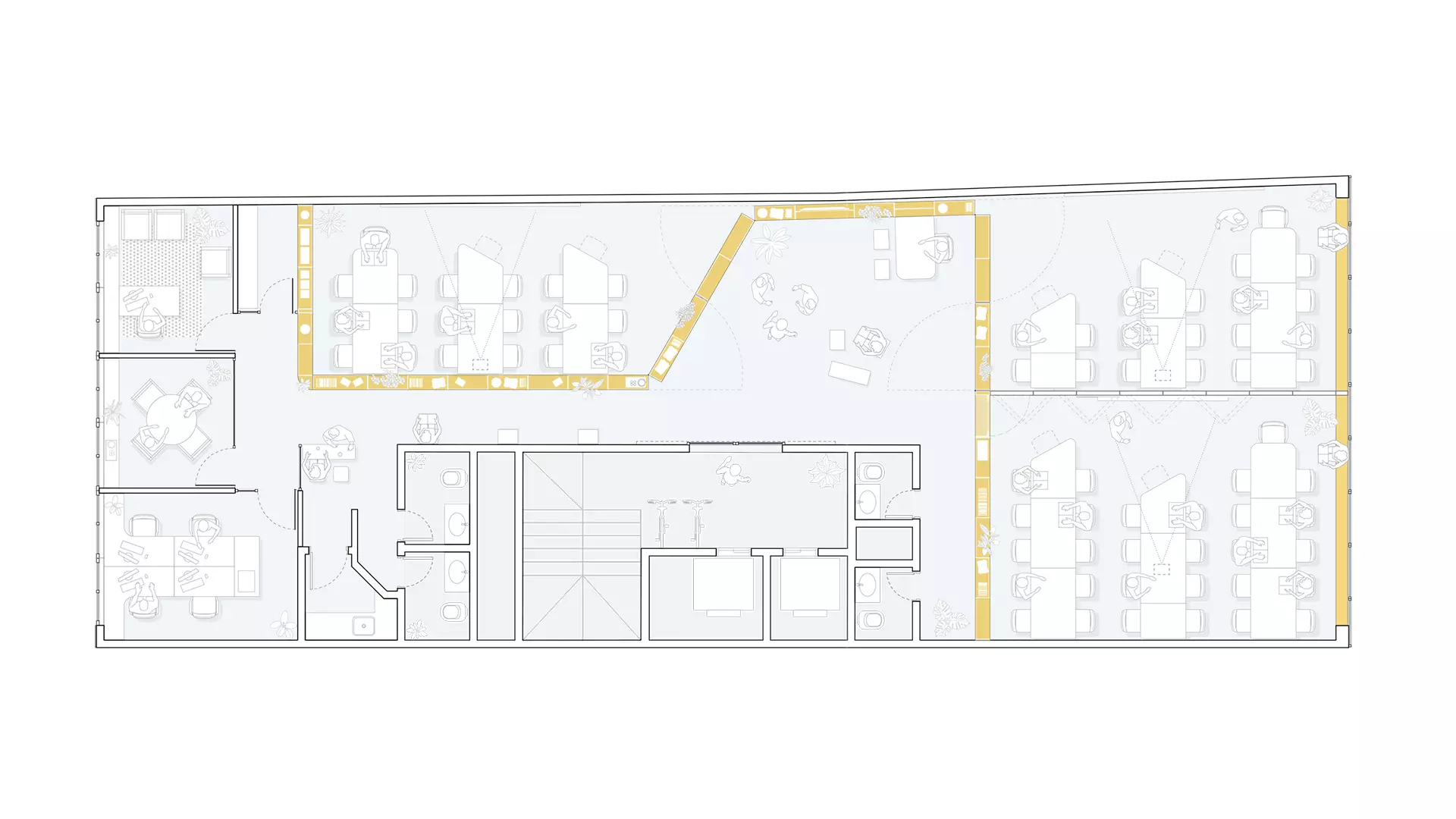 Appartement Spectral / BETILLON / DORVAL‐BORY. Image Courtesy of BETILLON / DORVAL‐BORY
Appartement Spectral / BETILLON / DORVAL‐BORY. Image Courtesy of BETILLON / DORVAL‐BORY
Lastly, the selection of coatings and materials adds the finishing touch to an interior design project. It serves as a visual representation of the designer's vision and the desires and needs of the users. The choice of materials considers factors like aesthetics, function, durability, and environmental impact.
Now, let's delve deeper into some key aspects of interior design.
Layout: Creating Spaces That Flow

The layout of a space refers to the arrangement of equipment, furniture, and objects within it. A well-planned layout can enhance the flow of space, create designated areas, and establish a hierarchical structure. In open architectural plans, where designers have more freedom, the layout becomes even more crucial in ensuring proper functionality.
To develop an effective layout, interior designers consider various factors such as accessibility standards, fire escape routes, and the minimum dimensions required for each room. While there are standard guidelines for room dimensions, the needs of the space and its users should also be taken into account. Optimal layouts are tailored to the specific requirements of each scenario.
 Appartement Spectral / BETILLON / DORVAL‐BORY. Image Courtesy of BETILLON / DORVAL‐BORY
Appartement Spectral / BETILLON / DORVAL‐BORY. Image Courtesy of BETILLON / DORVAL‐BORY
Furniture: Enhancing Functionality and Efficiency
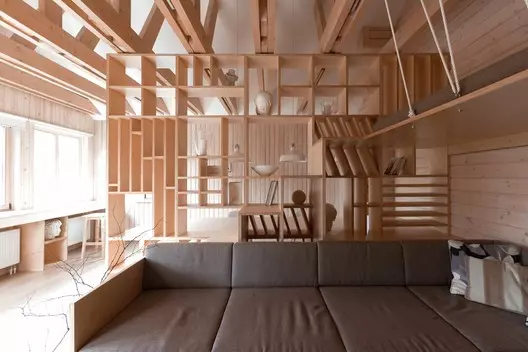
Furniture is a critical element that directly influences the quality of an interior space. It is the responsibility of interior designers to ensure that the selection of furniture enhances the functionality of the space without compromising circulation.
In small spaces, where efficiency is paramount, careful consideration is given to every piece of furniture. Designers often create customized items to maximize the use of limited square footage. Flexible furniture, such as stackable benches and collapsible tables, is becoming increasingly popular in compact living spaces. These innovative designs optimize space utilization and offer multifunctional solutions.
 Oficina do Arquiteto / Ruetemple. Image © Ruetemple
Oficina do Arquiteto / Ruetemple. Image © Ruetemple
Additionally, plants play a significant role in interior design. They not only add visual appeal, but they also purify the air, creating a healthier indoor environment. The recommended ratio is to have a medium-sized plant for every 10m² of space.
Comfort & Ergonomics: Designing for Well-Being
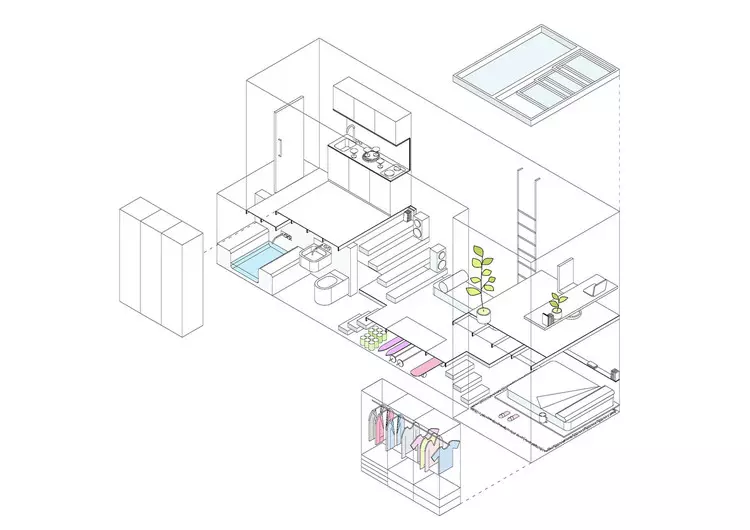
The comfort and ergonomics of an interior space are crucial for creating a positive experience. Comfort encompasses various factors, including aesthetics, temperature, lighting, and acoustics. The visual perception of a space, its colors, brightness, and depth, contributes to the overall comfort and mood of its occupants. Adequate acoustics ensure that conversations can be held without raising voices, and proper ventilation helps maintain clean and healthy indoor air quality.
 The Enchanted Shed & Leopold House / Franz&Sue. Image © Andreas Buchberger
The Enchanted Shed & Leopold House / Franz&Sue. Image © Andreas Buchberger
Ergonomics is another important aspect of interior design, focusing on designing spaces and devices that are well-adapted to the human body and mind. By considering the physiological, anatomical, and psychological characteristics of the users, designers can create spaces that cater to a wide range of needs and preferences.
Materials & Coatings: The Finishing Touch

The choice of materials and coatings is the final element that adds character and style to an interior design project. Beyond aesthetics and function, designers also consider the composition, origin, durability, recyclability, and environmental properties of the materials. Each material has a unique impact on the space and its future comfort.
The purpose of the space, the substance of the material, installation systems, and the surface layer are all factors to consider when selecting coatings and finishes. Texture, color, and the diffusion of light also play a role in creating the desired ambiance.
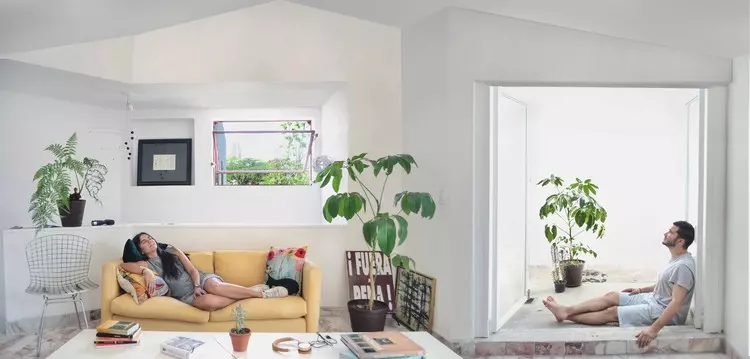 Urban Cabin / Francesca Perani Enterprise
Urban Cabin / Francesca Perani Enterprise
As we understand the physiological, anatomical, and psychological dimensions of human beings, we can design spaces that offer optimal comfort while embracing diversity and individual differences. Successful interior design projects prioritize holistic and multidisciplinary approaches, taking into account the unique needs of each user.

Interior design plays a vital role in creating spaces that enhance our well-being. So the next time you step into a well-designed interior, take a moment to appreciate how it transforms your experience.
Remember to check out ArchDaily's coverage on COVID-19-related topics, tips for working from home, and technical recommendations for healthy design. Stay up to date with the latest advice from the World Health Organization (WHO) regarding COVID-19.

















